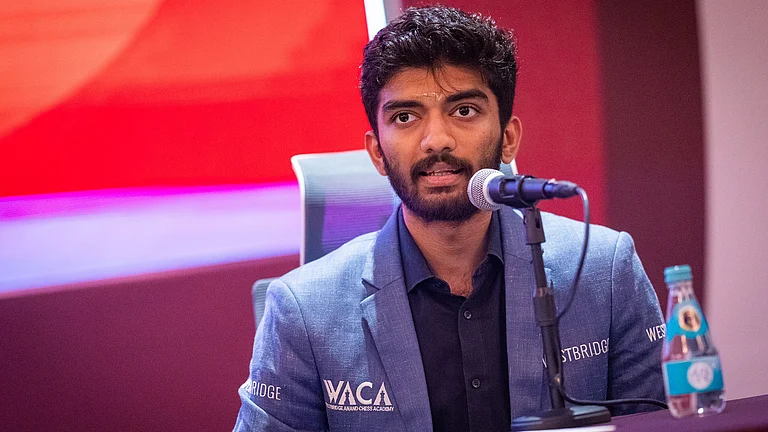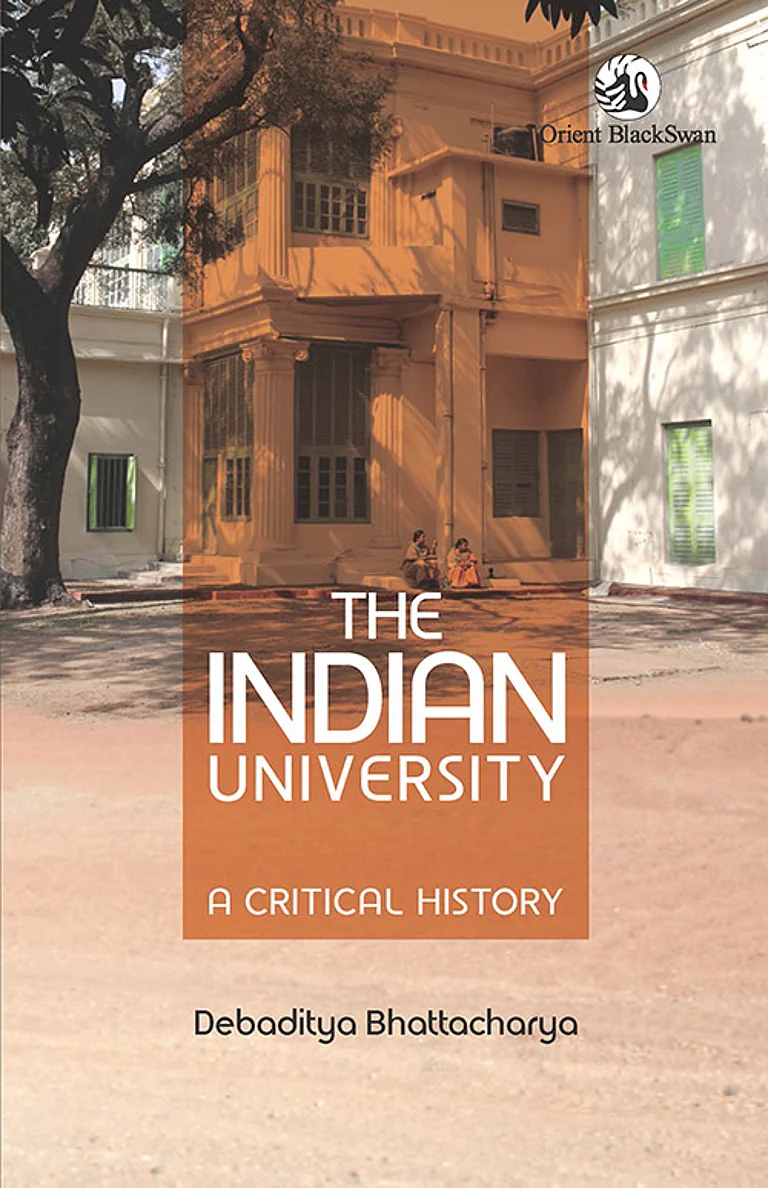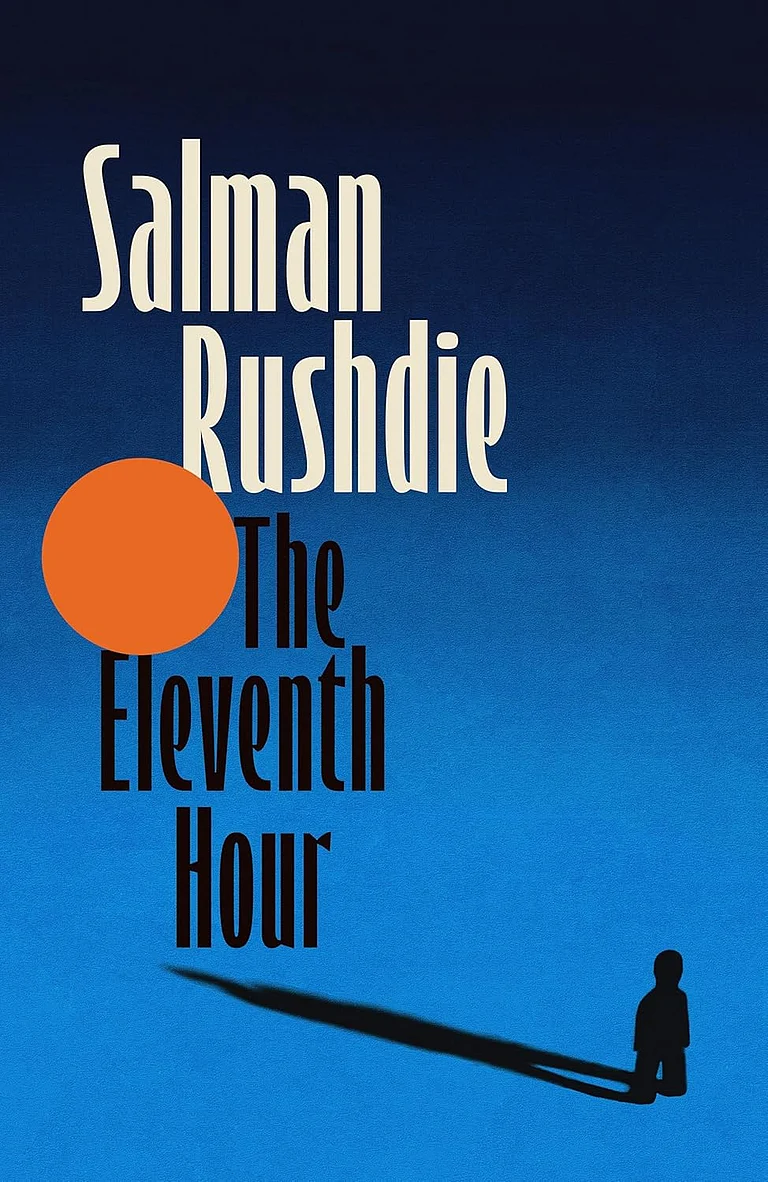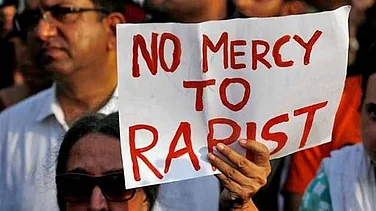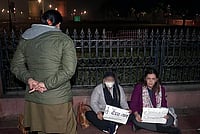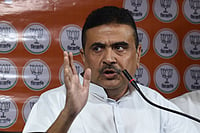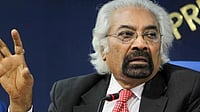There was a time when the occasional haul of counterfeit notes and dark suggestions of ISIs involvement elicited nothing more than passing curiosity. The problem was nothing new and the general attitude to it was, it couldnt be as bad as RDX. But two recent seizures from the Lahore-Amritsar Samjhauta Express has pitchforked the issue into a different orbit altogether.Subsequent events have given it the shape of a currency crisis.
Especially over the notes of Rs 500 and, to a lesser extent, Rs 100 denomination - the two that have swamped the system most in fake form. The IB estimates that fake currency in circulation, including locally-produced counterfeits, totals up to a whopping Rs 20 crore.
Samjhauta Express isnt the only conduit, though. The Home Ministry has been working up a frenzy over fakes flowing in through Indias 1,700-km-long porous border with Nepal along UP and Bihar, as also the Indo-Bangladesh border. Prime Minister Vajpayee too joined the chorus, talking of "conspiracies to disrupt our economy".
All this has had a ripple effect down the line. Last week, the Centre banned the use of the two notes in six districts of Bihar bordering Nepal, where ISI operatives have flooded the system with fakes. Soon, the scare had infected the business community as well as the common citizenry. Shopowners and traders as well as customers are now refusing to accept Rs 500 notes. In Delhi, acute sensitivity has built up around the note, with even some embassies and high commissions refusing to take them.
In Gujarat, the scare is so high, the state government is putting out ads in dailies with instructions on how to identify a fake. In Calcutta, business establishments and even some banks now refuse to accept the high-denomination note. According to IB officials, the northeastern states are also being flooded with fake currency.
It all started when Delhi Police recently seized nearly Rs 10 lakh in fakes, being couriered into India by passengers on the Samjhauta Express. Again, last week at Attari border, customs officials seized Rs 1 lakh in counterfeit notes from a passenger. Says a home ministry official, "Its unfortunate that Pakistan is using this train to create problems." The police now want the Centre to discontinue the Samjhauta Express.
It was in the last week of December that the first inklings came of the magnitude of the problem. Says Rajbir Singh, acp, special cell, Delhi Police: "We had information on several agents operating from the Walled City. They lure people who are financially weak and use them to bring in fake currency." Frequently, the couriers are unwitting victims - they arent always aware that they are carrying fake notes.
All the hauls have been of Rs 500 and Rs 100 notes. The number of fake Rs 500 notes in circulation is much higher since its easier to carry. In insider jargon, a bundle of Rs 500 notes is called badi chappal and one of Rs 100 notes choti chappal. Getting people to carry the notes into India is apparently not too difficult. According to the police, the hook is baited with the twin incentives of visiting long-lost relatives and a comfortable "spending allowance". The couriers reportedly get between Rs 5,000 and Rs 10,000 for each trip. And once the counterfeit money reaches the agents, its sold with a huge mark-down: Rs 1 lakh in fake notes goes for Rs 55,000.
Kamran Gohor, considered the kingpin of the racket, is a Delhi-based Pakistani national. He started operations in 1994, beginning with bringing in explosives and other goods. He was arrested and deported to Pakistan once but appears to be back in business. He is said to report to a Major Shahid, an ISI officer based in Lahore. The agents in the counterfeit-note pipeline get their commissions from four sources: Tarik Butt and Khalid Butt (both ISI agents), Abdul Wahid (currency operator) Altaff Butt (transfer), and Sumel and Safi (brothers engaged in smuggling).
The ISI focus is being played up because the link of the Pakistani agency has become clear. But in other states, Gujarat for instance, the fake currency racket has the backing of Indian business. It will be recalled how Trinath Mishra, the
cbi director, was shifted out when he inquired into a consignment of onions and Rs 15 lakh in fake currency which was seized from a consignment bound for a Kutch-based industrial group. This was at the height of the onion crisis.
Of the fake currency in circulation, only a small percentage is seized. According to home ministry records, only Rs 50.76 lakh of fake currency was seized in different parts of the country between 1994 and 1998. But significantly, the seizure in Delhi alone during the last one month is Rs 10 lakh.
Things are complicated by the fact that across the country, local criminals are also trying their hand in the forging business and here again the note of preference is the 500-rupee bill. And when such notes are seized, it makes it to the city pages of newspapers and is dismissed as just another crime.
But the police and home ministry officials believe that its not so simple. They are convinced that the local component in the forgery business is negligible, and that the counterfeit flood is part of the ISI gameplan. Says a home ministry joint secretary involved in countering the Pakistani agencys activities: "The ISI is printing counterfeit Indian currency in sophisticated printing presses and flooding the Indian market with that." A fact corroborated by Gohor, who has told the police how the fake notes are printed at the government presses in Karachi and Rawalpindi.
That still leaves the question of the Samjhauta Express. There is much confusion on whether the government will discontinue the train or not. Ajit Panja, the minister of state for external affairs, acknowledges that there is tremendous pressure on him to cancel the train but says other efforts are on to fight the fake notes menace.
For instance, the government is considering the introduction of a passport and visa system for Nepal and tightening the visa procedures between India and Pakistan. At the same time, the home and finance ministries are framing their strategies in consultation with the Reserve Bank of India (rbi). Says Sandip Bagchee, joint secretary with the home department: "The rbi is taking counter-strategies to combat the situation. A new mode of printing notes will be introduced." The home ministry has even advised the rbi to follow the Australian example and use polymer notes.
Clearly, keeping a vigil on the passengers of the Samjhauta Express alone will not do. The borders along J&K and the Northeast are entry points. So too is the Gujarat and Maharashtra coast. Added to this is the local mafia which is also out to make a fast buck. A multi-pronged offensive against the fake currency menace is what is called for. Till then, the ISI will continue to cash in.







